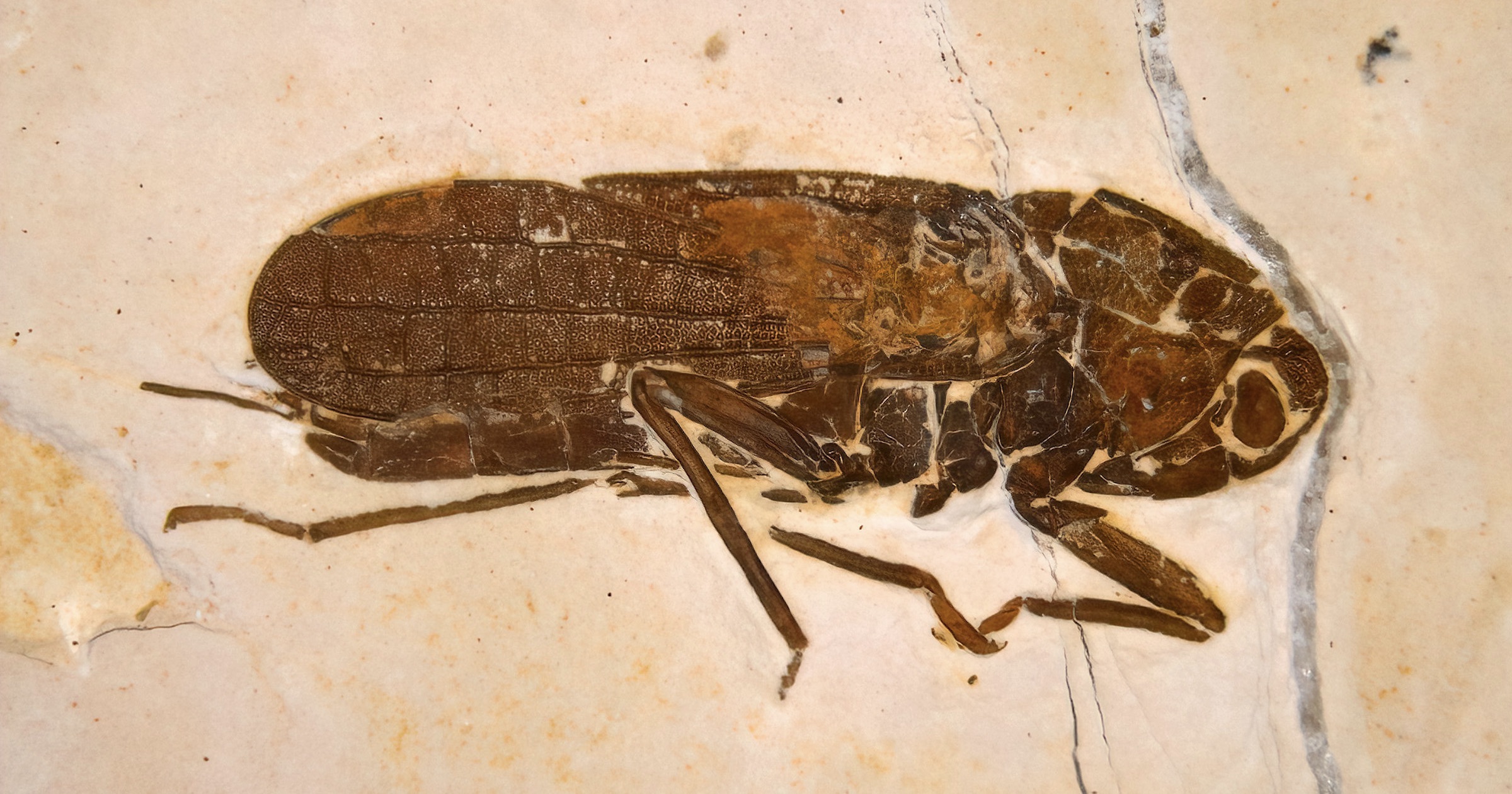 Evolution
Evolution
 Paleontology
Paleontology
Fossil Friday: Unknown Cicada from the Cretaceous

This beautiful specimen of a fossil cicada was found in the limestones of the Lower Cretaceous Crato Formation of north-east Brazil. It is about 115 million years old and represents a still undescribed new family of the suborder Cicadomorpha (Menon et al. 2007). Among the ten thousands of fossil insects that I personally studied from this locality there were many specimens of this new taxon.
Enormously Increasing Knowledge
The abundance of Cretaceous insects is a good example of an enormous increase in our knowledge of the fossil record within the past decades, which nullifies Charles Darwin’s attempt to explain away the gaps and discontinuities in the fossil record with our incomplete knowledge. As he said: “Geology assuredly does not reveal any such finely graduated organic chain; and this, perhaps, is the most obvious and gravest objection which can be urged against my theory. The explanation lies, as I believe, in the extreme imperfection of the geological record” (Darwin 1859). Indeed such incomplete knowledge plagued paleontology for a long time. Concerning Cretaceous insects the famous Professor Willi Hennig, a German entomologist and founder of modern phylogenetics, who happened to be my predecessor in office at the Natural History Museum in Stuttgart, said the following in his seminal work on insect phylogeny (Hennig 1969): “One of the most unfortunate gaps in our knowledge of the fossil history of insects is the almost complete lack of fossils from the Cretaceous.” (“Einer der beklagenswertesten Mängel in unseren Kenntnissen der Stammesgeschichte der Insekten ist das fast völlige Fehlen von Fossilfunden aus der Kreide.”)
Since then, numerous Cretaceous fossil insect localities have been discovered all over the globe, for example in Southern England (Weald), Spain (Sierra de Montsech and Las Hoyas), Russia (Magadan and Baissa), South Kazakhstan, Western Mongolia, China (Gansu, Hebei, Shandong, Liaoning and Inner Mongolia), Botswana (Orapa), south-east Morocco (Gara es Sbâa), south-west Egypt (Abu Ras), north-east Brazil (Crato), southern Argentina (Mata Amarilla), USA (Fox Hill, Colorado), Australia (Koonwarra), and various Cretaceous amber sites from Lebanon, Siberia (Taymyr), Myanmar (Burma), Spain (Alava), France (Besonnais), Congo, Canada (Cedar Lake and Medicine Hat), and the USA (Alaska and New Jersey). These localities have yielded hundred thousands of fossils from all insect orders.
Yet the Discontinuities Remain
This is just one of many examples of the exponential increase of our knowledge of the fossil record that has closed most previous gaps in knowledge. However, the actual gaps of fossil transitions and the ubiquitous fossil discontinuities (abrupt appearances, explosions) did not disappear at all with this new knowledge but became even more pronounced. This shows that we are not dealing with an artifact of undersampling or other bias but with a real signal in the empirical data. And the data clearly tell us that big changes and new body plans in the history of life came about very quickly, much too quick to be reasonably explained with Darwinian evolution. Only the infusion of new information from outside the system can explain these bursts of biological creativity, which is of course the inference of intelligent design theory.
References
- Darwin C 1859. On the Origin of Species. John Murray, 502 pp.
- Hennig W 1969. Die Stammesgeschichte der Insekten. Kramer, Frankfurt a.M. (Germany), 459 pp. English translation: Hennig W 1981. Insect Phylogeny. John Wiley & Sons, Chichester (UK), 514 pp.
- Menon F, Heads SW, & Szwedo J 2007. Cicadomorpha: cicadas and relatives. Chapter 11.12, 283-297 pp. in: Martill DM, Bechly G & Loveridge RF (eds). The Crato Fossil Beds of Brazil: Window into an Ancient World. Cambridge University Press, Cambridge (UK), xvi + 625 pp.
